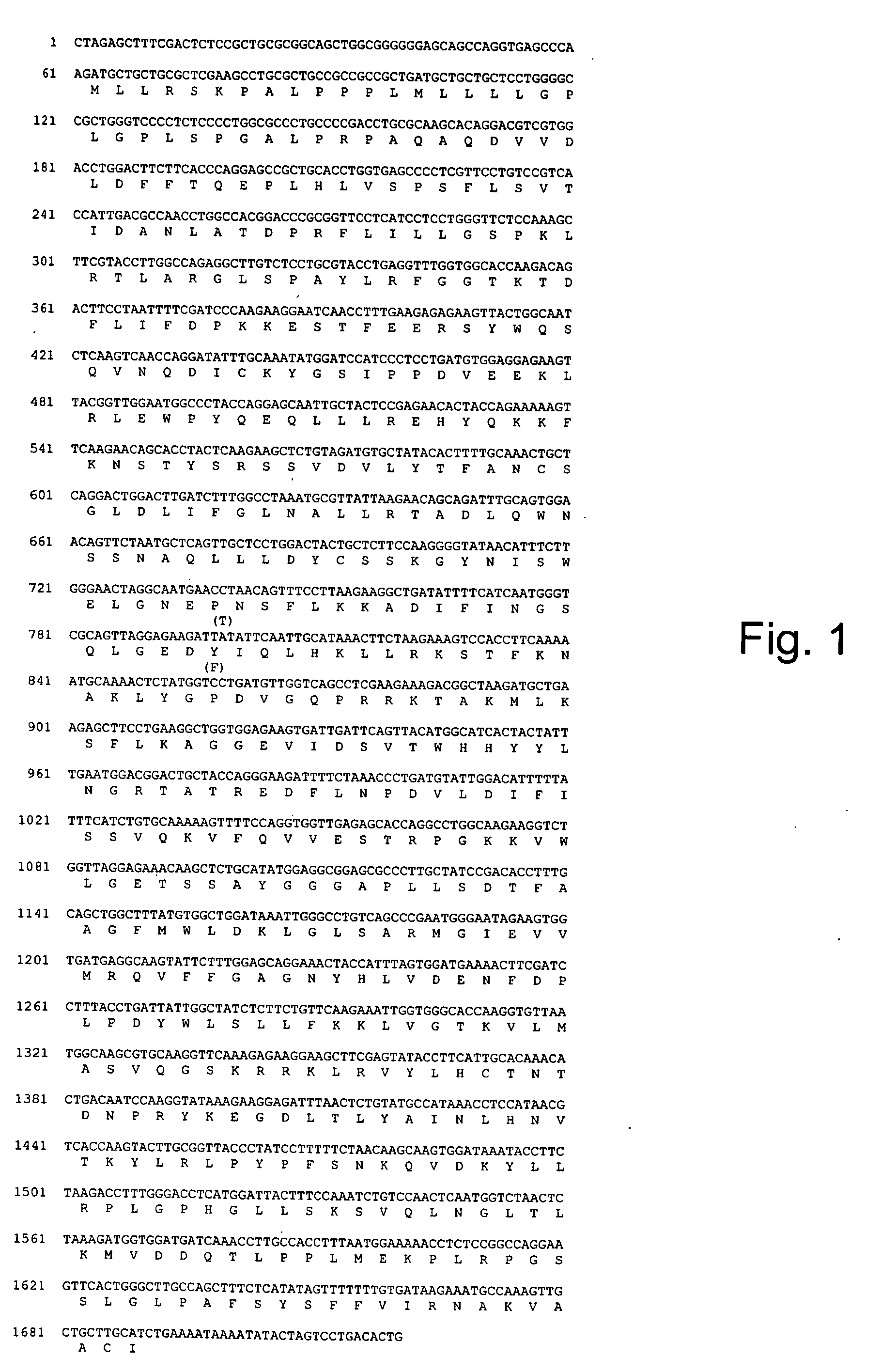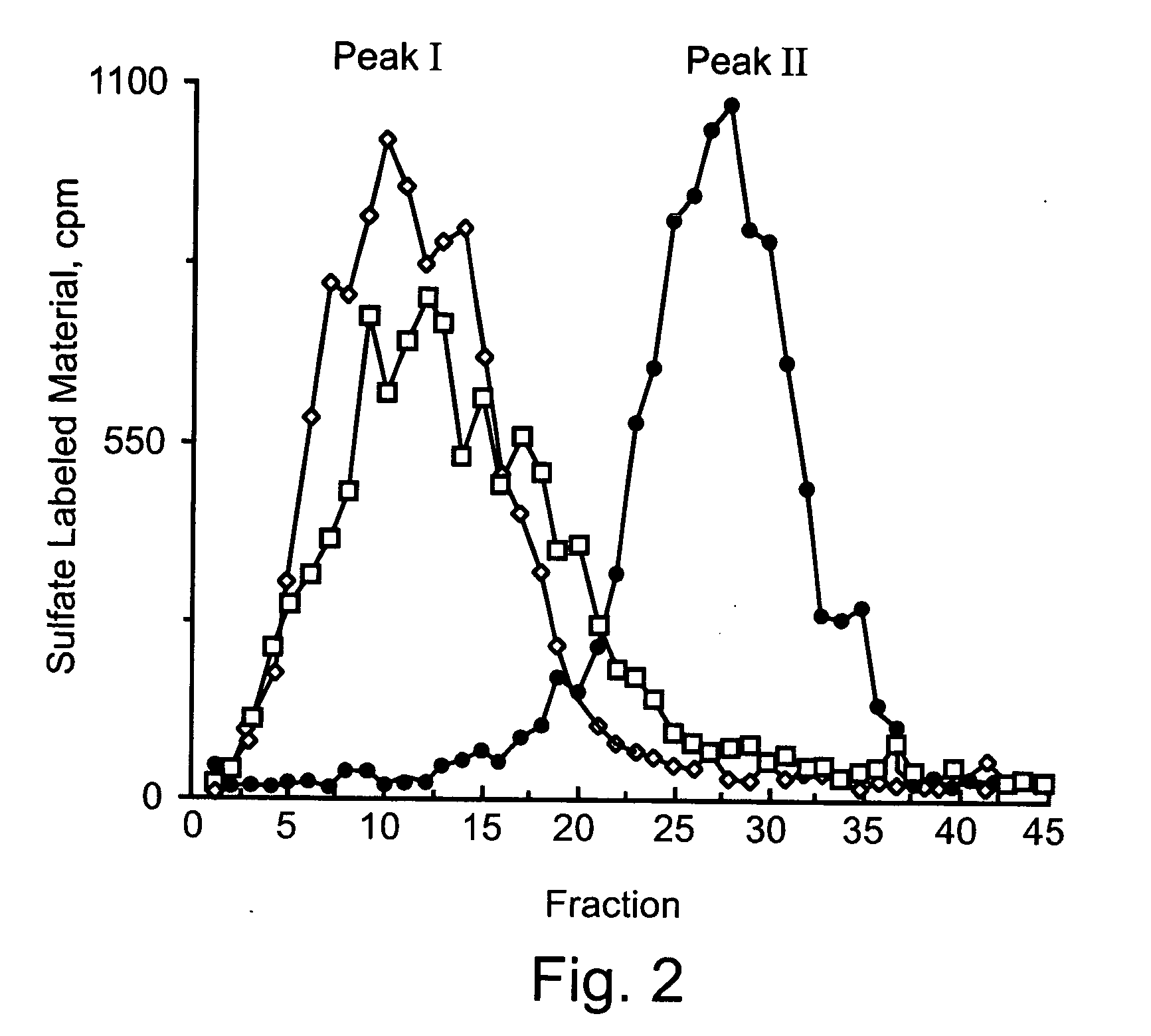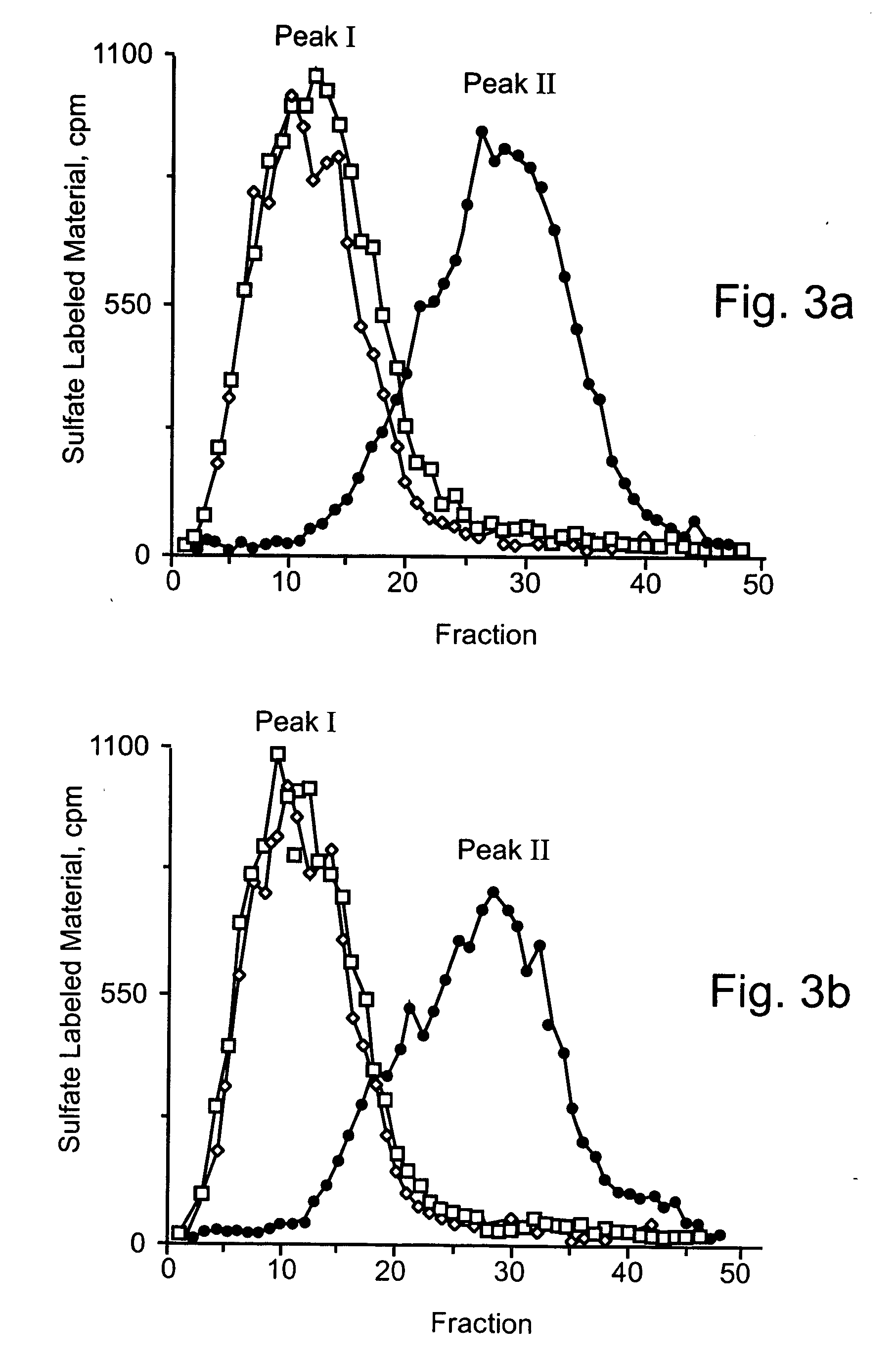Therapeutic and cosmetic uses of heparanases
a technology of heparanase and heparanase, which is applied in the field of polynucleotide, can solve the problems of unable to achieve the correct balance and function of expression, the approach of gene addition poses serious obstacles, and the research is handicapped by the lack of biologic tools, and achieves no detectable effect on enzymatic activity, and reduces the apparent size of the n-deglycosylated protein
- Summary
- Abstract
- Description
- Claims
- Application Information
AI Technical Summary
Benefits of technology
Problems solved by technology
Method used
Image
Examples
example 1
Cloning of human hpa cDNA
[0433] Purified fraction of heparanase isolated from human hepatoma cells (SK-hep-1) was subjected to tryptic digestion and microsequencing. EST (Expressed Sequence Tag) databases were screened for homology to the back translated DNA sequences corresponding to the obtained peptides. Two EST sequences (accession Nos. N41349 and N45367) contained a DNA sequence encoding the peptide YGPDVGQPR (SEQ ID NO:8). These two sequences were derived from clones 257548 and 260138 (I.M.A.G.E Consortium) prepared from 8 to 9 weeks placenta cDNA library (Soares). Both clones which were found to be: identical contained an insert of 1.020 bp which included an open reading frame (ORF) of 973 bp followed by a 3′ untranslated region of 27 bp and a Poly A tail. No translation start site (AUG) was identified at the 5′ end of these clones.
[0434] Cloning of the missing 5′ end was performed by PCR amplification of DNA from a placenta Marathon RACE cDNA composite. A 900 bp fragment (...
example 2
Degradation of Soluble ECM-Derived HSPG
[0439] Monolayer cultures of High Five cells were infected (72 h, 28° C.) with recombinant Bacoluvirus containing the pFasthpa plasmid or with control virus containing an insert free plasmid. The cells were harvested and lysed in heparanase reaction buffer by three cycles of freezing and thawing. The cell lysates were then incubated (18 h, 37° C.) with sulfate labeled, ECM-derived HSPG (peak I), followed by gel filtration analysis (Sepharose 6B) of the reaction mixture.
[0440] As shown in FIG. 2, the substrate alone included almost entirely high molecular weight (Mr) material eluted next to VO (peak I, fractions 5-20, Kav<0.35). A similar elution pattern was obtained when the HSPG substrate was incubated with lysates of cells that were infected with control virus. In contrast, incubation of the HSPG substrate with lysates of cells infected with the hpa containing virus resulted in a complete conversion of the high Mr substrate into low Mr labe...
example 3
Degradation of HSPG in Intact ECM
[0448] Next, the ability of intact infected insect cells to degrade HS in intact, naturally produced ECM was investigated. For this purpose, High Five or Sf21 cells were seeded on metabolically sulfate labeled ECM followed by infection (48 h, 28° C.) with either the pFhpa4 or control pF2 viruses. The pH of the medium was then adjusted to pH 6.2-6.4 and the cells further incubated with the labeled ECM for another 48 h at 28° C. or 24 h at 37° C. Sulfate labeled material released into the incubation medium was analyzed by gel filtration on Sepharose 6B.
[0449] As shown in FIGS. 6a-b and 7a-b, incubation of the ECM with cells infected with the control pF2 virus resulted in a constant release of labeled material that consisted almost entirely (>90%) of high Mr fragments (peak I) eluted with or next to VO. It was previously shown that a proteolytic activity residing in the ECM itself and / or expressed by cells is responsible for release of the high Mr mat...
PUM
| Property | Measurement | Unit |
|---|---|---|
| body weight | aaaaa | aaaaa |
| molecular weight | aaaaa | aaaaa |
| molecular weight | aaaaa | aaaaa |
Abstract
Description
Claims
Application Information
 Login to View More
Login to View More - R&D
- Intellectual Property
- Life Sciences
- Materials
- Tech Scout
- Unparalleled Data Quality
- Higher Quality Content
- 60% Fewer Hallucinations
Browse by: Latest US Patents, China's latest patents, Technical Efficacy Thesaurus, Application Domain, Technology Topic, Popular Technical Reports.
© 2025 PatSnap. All rights reserved.Legal|Privacy policy|Modern Slavery Act Transparency Statement|Sitemap|About US| Contact US: help@patsnap.com



